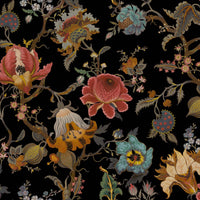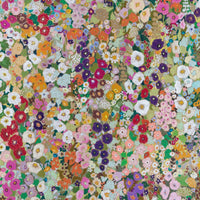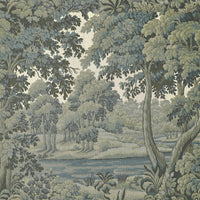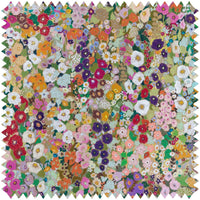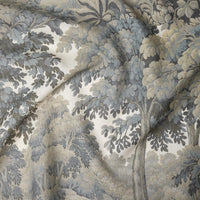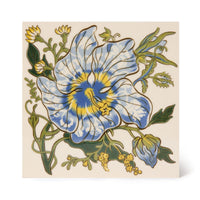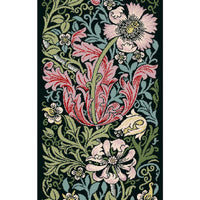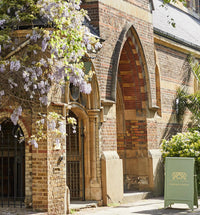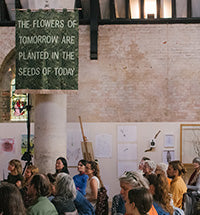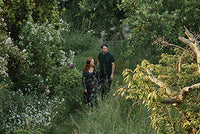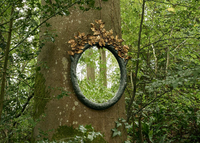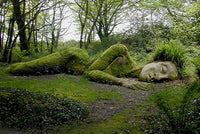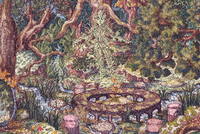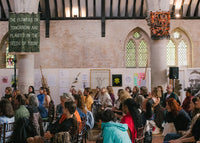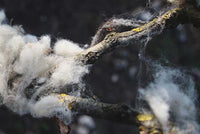

House of Hackney has come together with The Library of Esoterica to bring you a season of Plant Magick through spellbinding essays, events, art and interiors, with the plant as muse.
From root to vibrant blossom, Taschen’s Plant Magick explores the fertile, interconnected history between plants and people. This creative partnership is rooted in a shared reverence for the enchanted, the unseen, and the profound beauty that surrounds us.
And I say the sacred hoop of my people was one of the many hoops that made one circle, wide as daylight and as starlight, and in the center grew one mighty flowering tree to shelter all the children of one mother and one father. And I saw that it was holy...But anywhere is the center of the world.
– Black Elk, from the collected works, Black Elk Speaks, edited by John G. Neihardt (1932)
-
As resonant mythological symbols and objects of veneration, trees have played a central role in our shared evolution on Earth. Trees provide us with sustenance and support, not only spiritually, but through the offerings of nutrients and their fecundity of fruit, nut, and seed. And, perhaps most importantly, through their life-sustaining process of photosynthesis, the miraculous transformation of carbon dioxide into precious oxygen.
With life spans ranging from approximately hundreds to thousands of years old, trees are some of the oldest living organisms on Earth. One, a recently discovered Bristlecone Pine, still growing high in the mountains of California, and dubbed “Methuselah” by researchers, is thought to have pushed its way through topsoil nearly five thousand years ago. A sapling which swayed in the sunlight during the very dawn of human civilization, Methuselah was standing tall during the building of the Great Pyramid at Giza and the construction of the rock circle at Stonehenge. Other species of “clonal” trees, named as such because they grow individually but are connected by a single root system, are thought to be even older. A Norway Spruce currently growing in Sweden, for instance, boasts a web of rooted trees that have been alive for nearly 10,000 years.
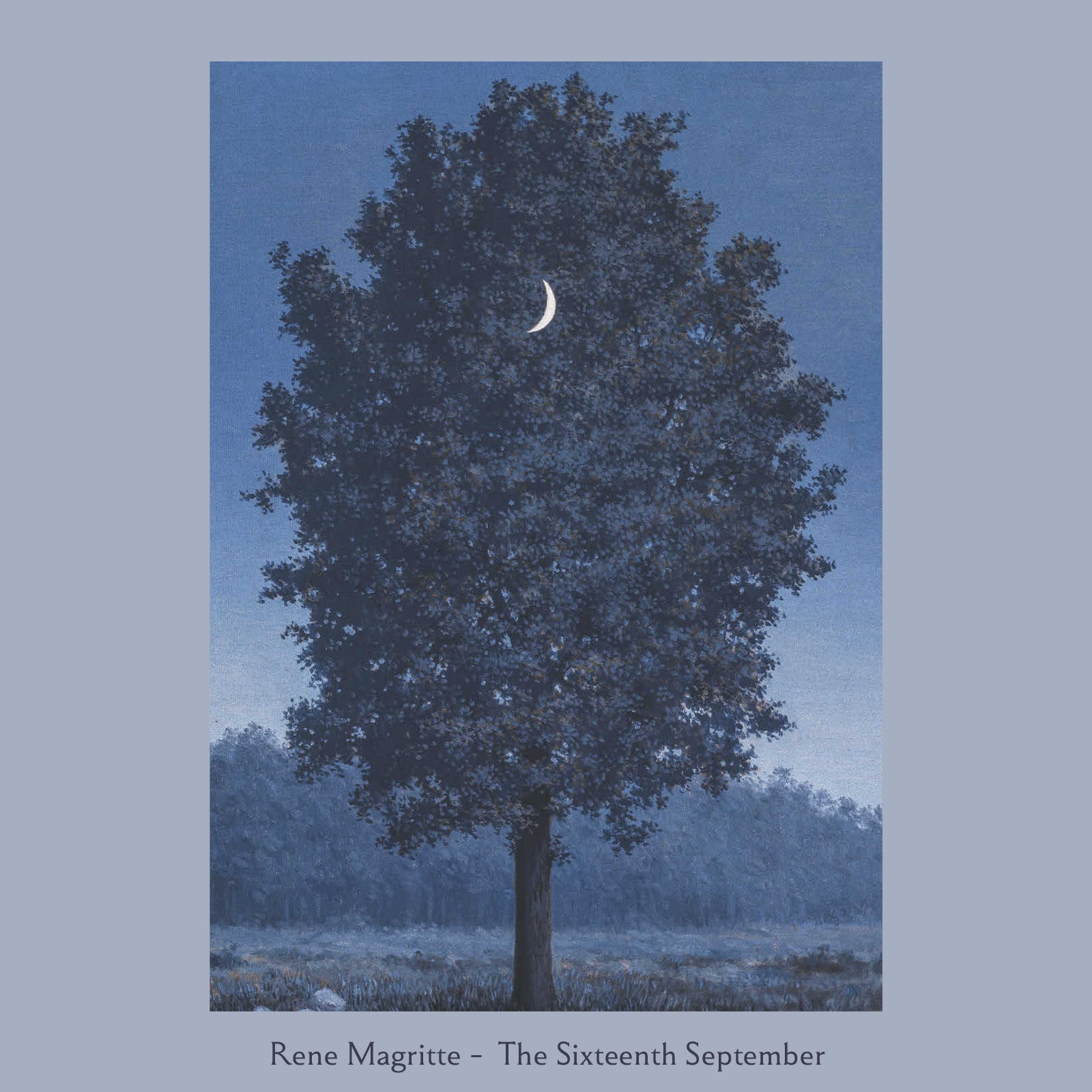
In her 2021 book, Finding the Mother Tree: Discovering the Wisdom of the Forest, ecologist, scientist, and scholar Susan Simard writes of the evolution of the trees and the ways in which they communicate and interconnect. She speaks of the forest as a mirror of the larger cycles of death and rebirth in nature. “Nothing lives on our planet without death and decay. From this springs new life, and from this birth will come new death. The forest itself is part of much larger cycles, the building of soil and migration of species and circulation of oceans.” Simard also explores the ways trees support not only each other, through a vast network of roots, but also how they support all other life on Earth. “The source of clean air and pure water and good food.”
“There is a necessary wisdom in the give-and-take of nature – it’s quiet agreements and search for balance. There is an extraordinary generosity.”
Jessica Susan Simard, Finding the Mother Tree
This generosity has long been understood and appreciated, particularly by our early ancestors, for whom trees were at the center of their earliest forms of worship and spiritual rites, as well as universal symbols of birth and life-giving bounty. Among world’s many cultural mythologies concerning trees, nearly all are rooted in the symbolism of what is most often referred to as the “Tree of Life,” thought to have its origins in the ancient Sumerian poem, The Epic of Gilgamesh, a tale carved into clay tablets more than 4000 years ago. One of the oldest known pieces of written literature in the world, Gilgamesh, tells of a hero’s quest for immortality through his journey in search of a life-giving plant.
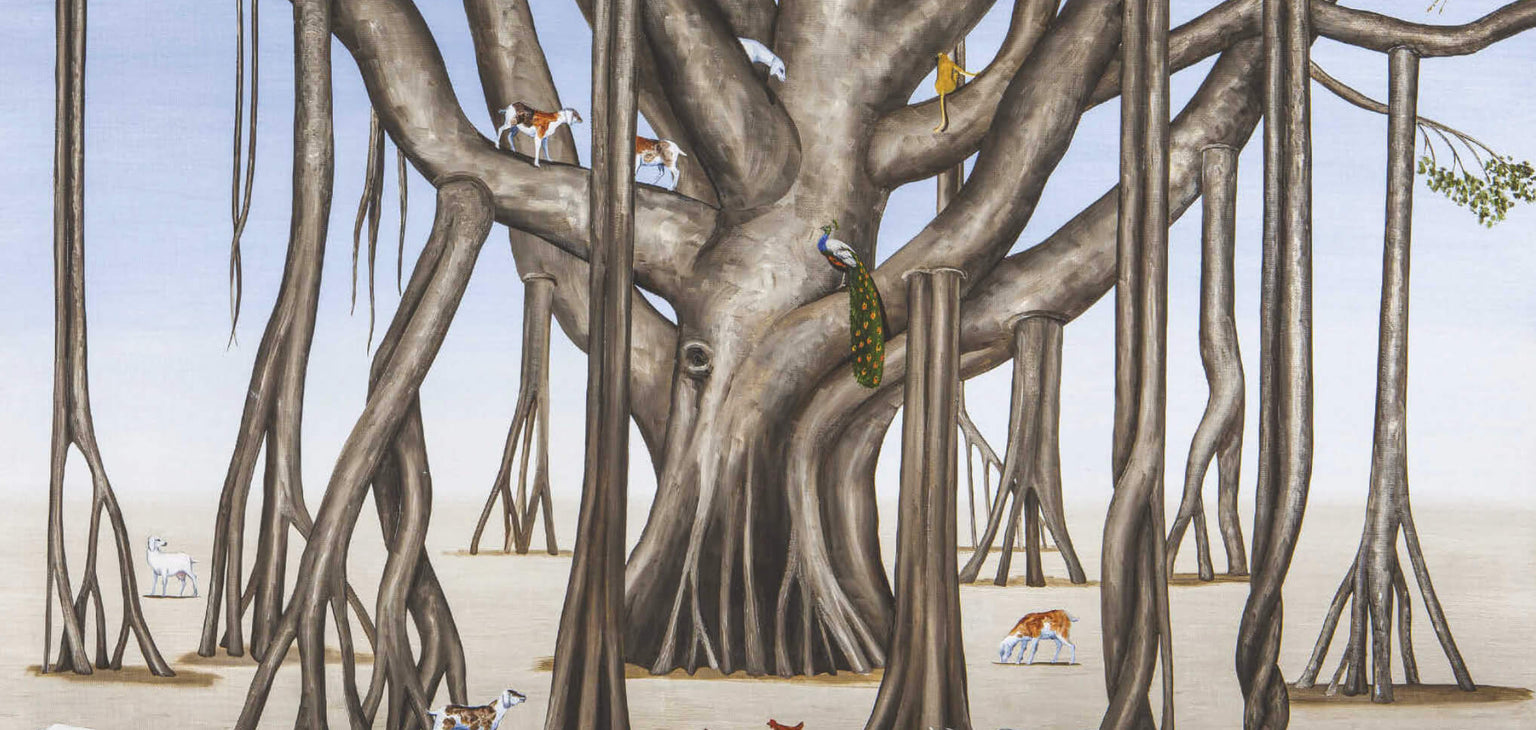
Artwork: Rebecca Campbell - In the Shade of The Banyan Tree
"Trees provide us with sustenance and support, not only spiritually, but through the offerings of nutrients and their fecundity of fruit, nut, and seed. And, perhaps most importantly, through their life-sustaining process of photosynthesis."
Jessica Hundley
Egyptian myths tell of a sacred tree from which all gods were born, the tree a representation of the cycle of life and seasons, death, rebirth and the connection between the physical, terrestrial world and the afterlife. In ancient Norse and Germanic mythologies this sacred axis tree was known as the “Yggdrasill.” Its branches were thought to spread across the world, nourishing all living things and linking the gods to the human realm. In the sacred Hindu texts, the Upanishads, written between 8th century and 3rd century BCE, the cosmic tree is called “Asvattha,” and is said to grow upside down, its roots deep in the heavens, its branches reaching down toward Earth. Sumerian, as well as early Babylonian and Assyrian mythologies all shared belief in a maternal goddess, a matriarchal deity associated with the Earth – with growth, life, and death. This goddess was often depicted as a great tree, branches lifted to sky, her leaves protecting all below, her roots running deep and strong in fertile soil.Although meanings vary, the symbol of the tree as axis-mundi, a representation of connection between our world and the heavens, roots and branches linking the realm of the corporeal to the realm of the gods, can be seen in early forms of spiritual worship across the globe. In the earliest iconography of the ancient Jewish gnostic tradition of the Kabbalah, the tree of life is referred to as the “Sefirot” (or “Sephiroth”), a sacred geometric diagram representing the birth of the universe as a tree-like form of divine archetypes and energies. In the indigenous Mesoamerican cultures of Central and South America, depictions of world trees have been discovered among numerous ancient artworks and artifacts. In Mayan, Olmec, and Aztec beliefs these trees are thought to represent the four cardinal directions, trunk and branches forming a central passage between the underworld, the Earth, and the sky.
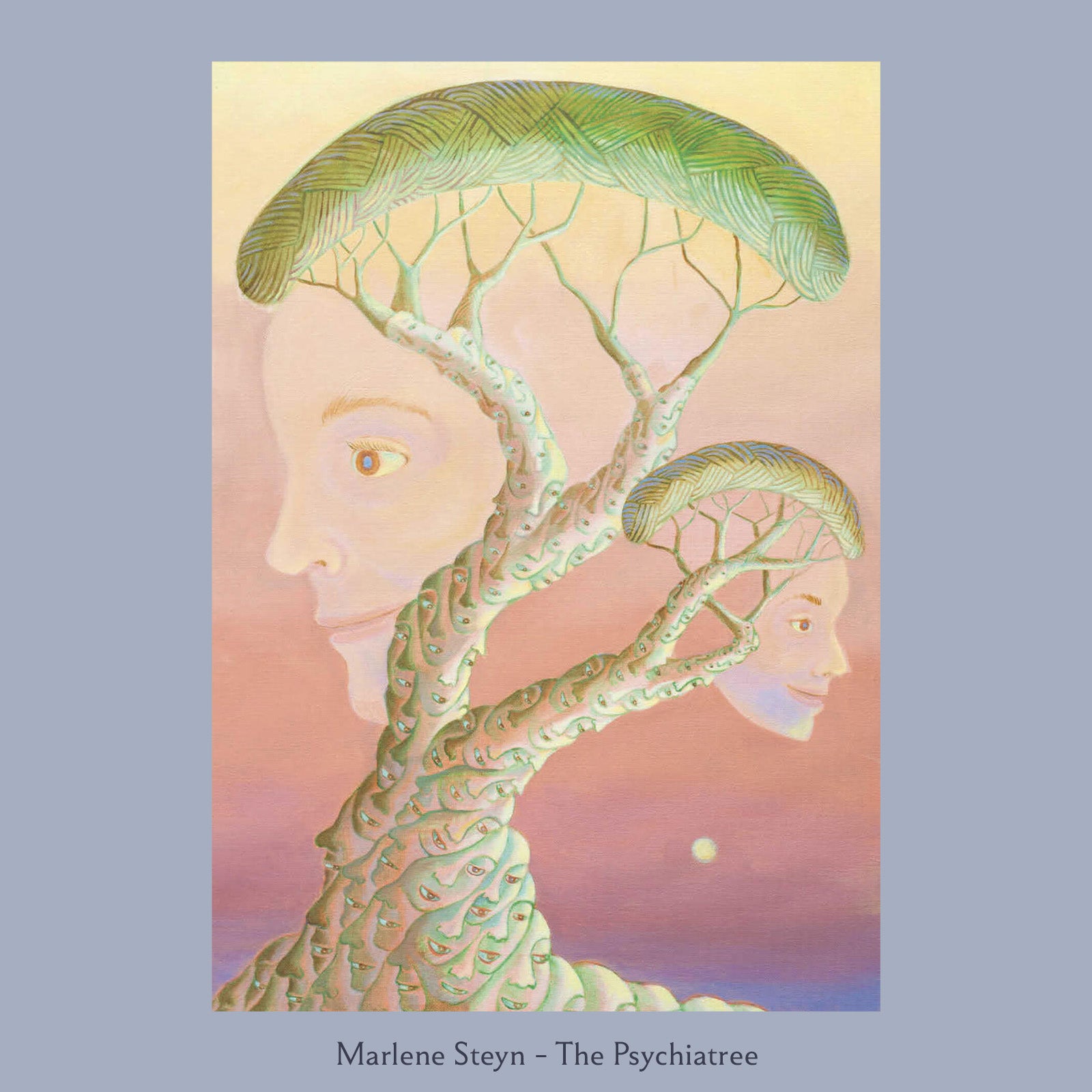
In early African creation myths, the gods were said to have created the baobab tree, uniquely shaped to enable it to store water in its prodigious trunk. With its offerings of shade and nutrient-dense fruits, the Baobab was considered a symbol of hope and life amid a dry and arid landscape. In India, the coconut tree is particularly venerated, its fruits and leaves used often as religious offerings. Its name in Hindi, “Mahua” can be translated as “Great Gift.”The mango tree is also considered sacred in Hindu cultures and utilized in various rituals and festivals. Sandalwood is another symbolic tree across India, considered a link to the gods, specifically to Lakshmi, the goddess of wealth and good fortune. Sculptures of various Hindu deities are often carved of sandalwood and placed as offerings at altars and monasteries.
In Buddhist texts, Buddha is said to have attained enlightenment under the Bo or Bodhi Tree, known also as the “Tree of Knowledge.” The spiritual symbolism of the Tree of Knowledge appears in Christian mythologies as well, specifically within the Biblical chapter of Genesis, which tells of Eve’s temptation in the Garden of Eden, tempted by the snake to eat the Tree’s forbidden fruit. In the Old Testament story of Noah’s Ark, a tree plays a symbolic role as well, a dove delivering Noah an olive twig to signify that God’s wrath was waning and the floods would finally abate. The olive branch continues to remain a symbol of peace in cultures across the world.
In the pagan religions, particularly in Northern Europe and the British Isles, sacred trees also figured prominently. Druidism, a spiritual tradition thought to have originated during the Iron Age, over 2,500 years ago, places trees at the center of its rites and worship. The oak figures prominently in Druid mythology, and it is thought that Druidic rites were often per- formed amid oak groves. Mistletoe, a parasitic plant which often grows on host trees such as oak, was also gathered by Druids and used for both its medicinal qualities and in magickal fertility rituals. The word “Druid” itself is thought to have been derived from a Celtic word meaning, “knower of the oak tree.”The first known written documentation of Druid tree worship can be found within the first century tome, Historia Naturalis, which describes the cutting of mistletoe for a fertility ritual. Written by Greek historian, Pliny the Elder, the book goes on to document the importance of trees within not only Druidic practices, but other global cultures as well. “Once upon a time trees were the temples of the deities,” Pliny writes, “and in conformity with primitive ritual simple country places even now dedicate a tree of exceptional height to a god; nor do we pay greater worship to images shining with gold and ivory than to the forests and to the very silences that they contain. The different kinds of trees are kept perpetually dedicated to their own divinities.”
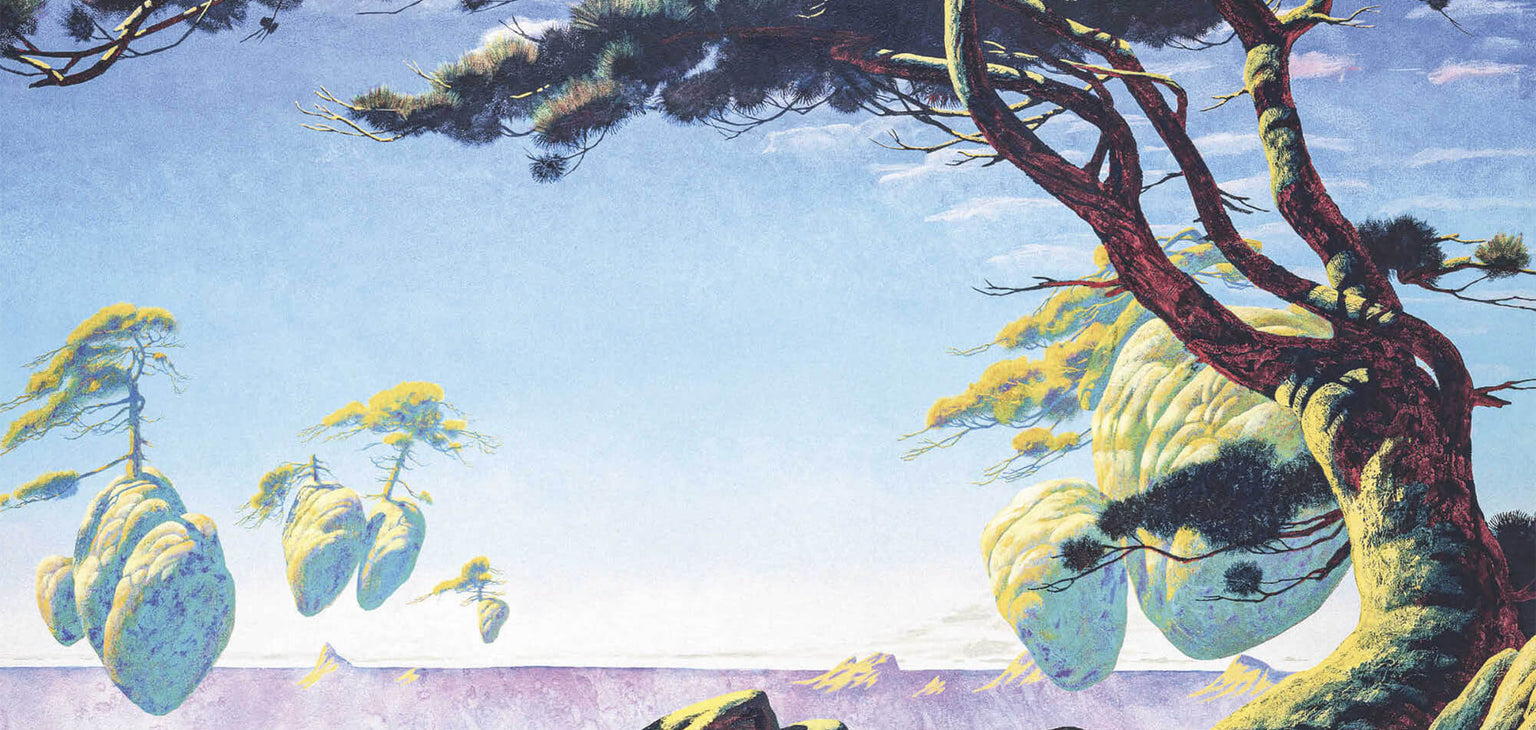
Artwork: Rogear Dean - Floating Islands
NATURE CONNECTION
WITH STAR FELIZ
If we want to survive in thriving ecosystems, we must develop our connection to the higher heart. This energetic language is the language of the sentient universe, and we can remember to communicate it and once again reclaim our role as guardians of Earth.
-
“I’m an artist and a medicine person born and raised in Lenapehoking [New York City] to immigrant parents from Kiskeya Ayiti [Dominican Republic]. My ancient ancestral lineages of West African, Taino Arawak, and Southern European greatly influence my multi-faceted medicine practice. This hybridity of older traditions and a present engagement with evolving Earth energies creates an empowered path to the future. I understand the dynamic magic of being alive during this moment in history as a diasporic Black, Indigenous, queer, and non-binary person. Before I came out as a practicing herbalist and brujx, plants became a way for me to talk about origin stories, hybridity, the violent commodification of life, consciousness hidden in plain sight, and the dialectics of Western and indigenous epistemologies within my artwork. I was making scans of commodified plant images (scientific textbooks, supermarket flyers, floral wrapping paper) and using digital techniques of processing (erasing, cutting, pasting, downloading) to understand where modernity has been in terms of a relationship to plants and where I want to go. Because humans have evolved alongside plant life it’s interesting to notice the way that these works activate a heart-based connection with people. All of Earth is sacred. From urban lands to forested landscapes, we are the Earth, the Earth is us. The break in our ideologies that created these disconnections stem from colonial systems. With affirming an interconnectedness, we begin to see with clarity the threads of life and our ideologies can shift on a collective scale. To be in right relationship with plants and the natural world is so important for our modern contemporary culture.”
– Star Feliz, Artist, Herbalist, Founder of Botánica Cimarrón, 2022
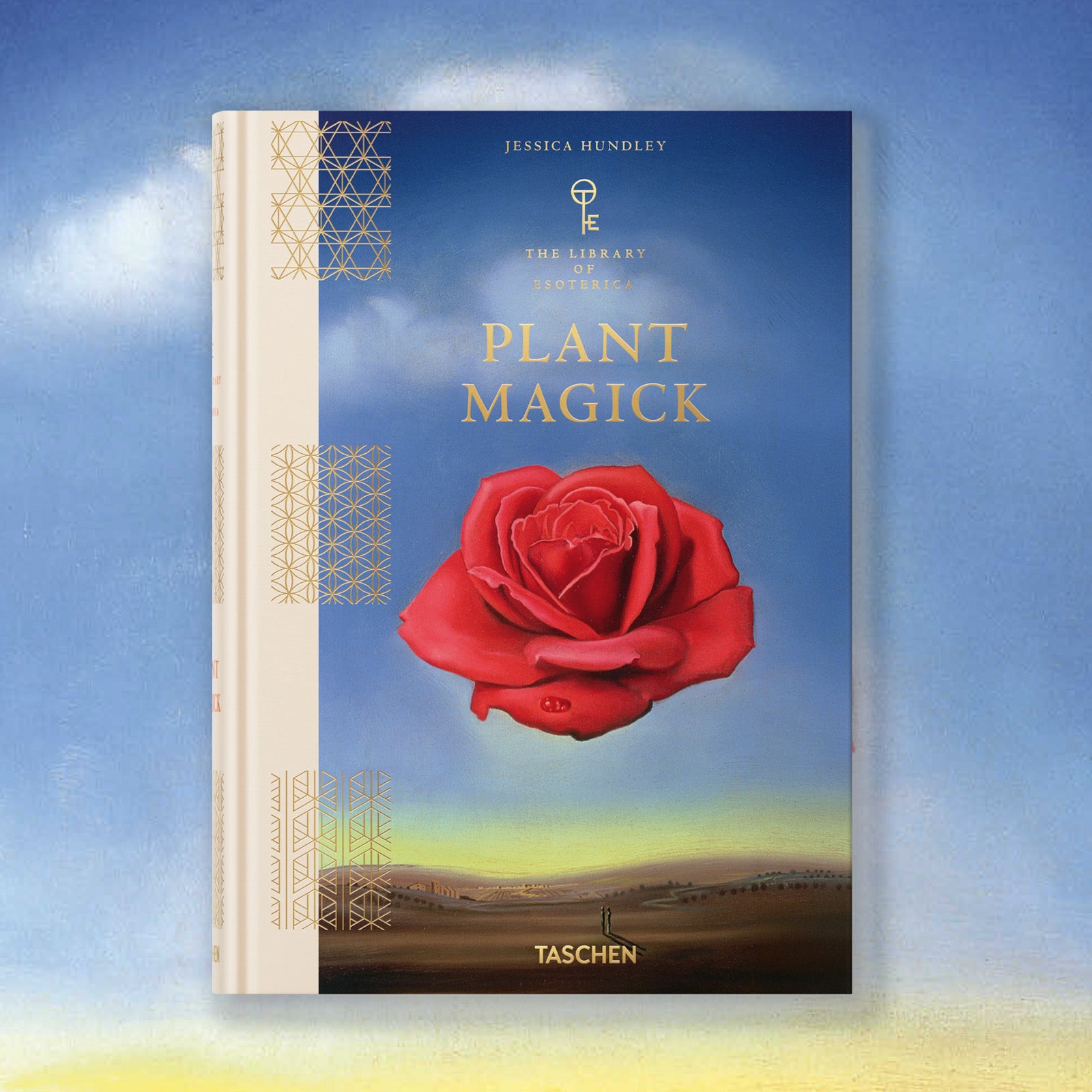
PLANT MAGICK
PLANT MAGICK
Throughout the ages, metaphysical traditions have been translated into sacred and visionary art. The Library of Esoterica explores the symbolic language of our most potent universal stories.
The fourth volume in The Library of Esoterica explores the historic roots of plants in myth and magickal practices. Through essays, interviews, and more than 400 images—from ancient Egyptian stonework to Victorian botanical art, to contemporary works celebrating nature —
Plant Magick chronicles the symbiotic relationship between plants and people.
Add a little magick to your life.












